
|

|
|
Home Site Search Contact Us Subscribe
|
|
A Filtered View #4: Where is Sustainability's Flying Buttress? It may take a decade or so before photovoltaics and other energy-producing technologies find an aesthetic foothold, but for architecture to survive - they must. By Charles F. Bloszies, FAIA February 4, 2016 Editor’s note: This is the fourth in a series of musings by San Francisco-based architect Charles F. Bloszies, FAIA.
Gravity, for architects, has always been a nuisance. It must be resisted to enclose space, and the components of a building’s skeleton must be a certain size and shape to stand up, which significantly influence the appearance of a building.
From time to time, innovations, like the arch, allowed architects to span greater distances than ever before and enclose larger, more dramatic spaces. But the arch caused a side effect that proved difficult to resolve both physically and aesthetically – thrust. Ties and other interior elements would interfere with the transcendent quality of the enclosed space, plus, for early architects, materials strong or stiff enough (like steel) didn’t yet exist. What evolved on the exterior of the great cathedrals, mostly through trial and error, was sublime – the flying buttress: a shape assigned to balance structural forces, as it seemingly defies gravity while quietly going about its business; a formal expression of a scientific principle.
Innovations in material technology have had a similar effect – like the arch, steel allowed architects to span longer distances, and build higher, too. But new materials often struggled to find a new aesthetic expression. Cast-iron columns, for example, first appeared with classical capitals, as if unaware that castings need not look like stone carvings. It took almost a decade before new forms evolved.
The most influential scientific breakthroughs in architecture, however, have been analytical. Using basic principles of mechanics and tools no more advanced than the slide rule, structural engineers were able to measure the parameters of strength and stiffness with enough confidence to build the Empire State Building without fear of failure. The “error” part of trial and error was removed from real time – errors had become virtual and could be corrected before the first rivet was set.
Today, the analytic power of computer technology has removed almost all of the formal constraints architects have wrestled with for centuries. It is now possible to devise structural support for just about any conceivable architectural geometry and keep it weather-tight as well. Despite the fact that gravity hasn’t changed much since the discovery of the arch, structure no longer informs architecture like it used to. Nowadays the forces of economics inhibit creativity more than the force of gravity.
This may need to change. During the last century, architecture evolved in an effort to do more with less; nonetheless, enormous amounts of energy have been devoted to creating the built environment we have today. Like gravity, climate has always been a nuisance for architects as well. Buildings have devoured more natural resources resisting its forces than the planet has been able to replenish. Almost everyone seems to agree that we need to be more responsible.
But how will the innovations underpinning a sustainable design approach influence architectural form? Will energy-producing technologies yield forms as functionally elegant as the flying buttress? So far, the early adopters have struggled with elements that have this potential. Solar panels are plopped on rooftops, and wind turbines purportedly “integrated” into building designs look like huge kinetic gargoyles. Yet innovative materials with intrinsic beauty are emerging, poised to enter the architectural mainstream. Like cast iron, it may take a decade or so before photovoltaics and other energy-producing technologies find an aesthetic foothold, but for architecture to survive they must. In time, sustainable technology will yield a flying buttress.
Charles F. Bloszies, FAIA, is an architect, structural engineer, and writer – and principal of a practice in San Francisco focused on complex urban infill projects. He is the author of Old Buildings, New Designs – Architectural Transformations, published in 2011 by Princeton Architectural Press and now in its third printing.
See also:
A Filtered View #1: Buckminster Fuller (Not Al Gore) Invented the Internet
A Filtered View #2: Ubiquitous Stuff - Why is Most of it so Ugly? Maybe Apple should design all of this stuff; or maybe Philippe Starck.
A Filtered View #3:
Socially Progressive, Architecturally Conservative: A San Francisco Paradox
|
(click on pictures to enlarge) 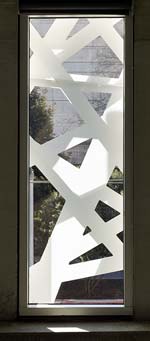 Matthew Millman Photography A Filtered View 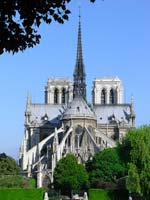 Eric Pouhier The flying buttresses of Notre Dame de Paris 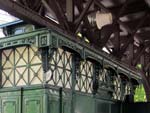 Beek100 An assortment of decorative and structural metal materials were used for this former public toilet built in 1904 in Berlin; it is now a kiosk. 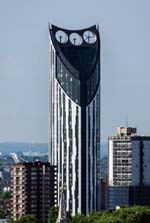 Cristian Bortes Giant wind turbines top the Strata Tower, London, winner of BD/Building Design’s 2010 Carbuncle Cup. 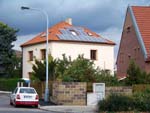 Wikimedia Commons Solar panels tacked onto the roof on a house in Prague.  Konarka Technologies Flexible, printed, thin-film photovoltaics by Konarka Technologies. |
© 2016 ArchNewsNow.com